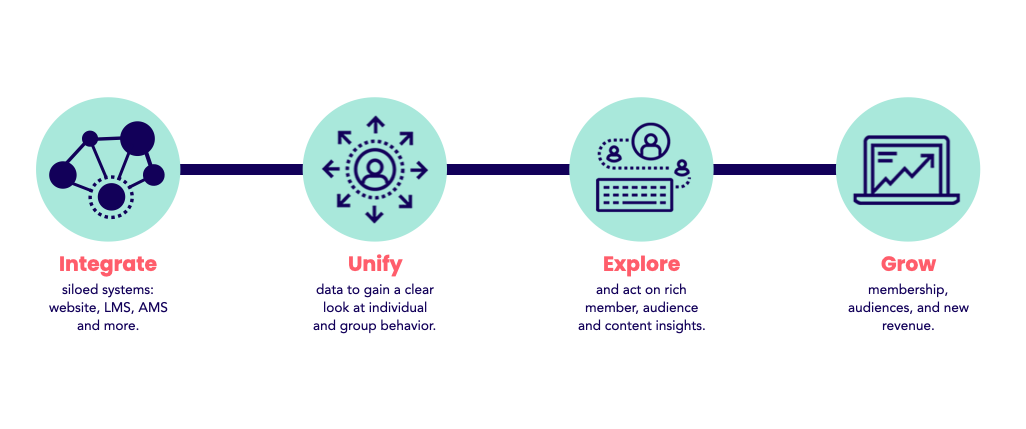In recent years, tech giants, ecommerce companies and subscription businesses like Instagram, Amazon, and Spotify have raised the bar for online experiences. How? They've personalized almost every digital interaction. Think experiences like Netflix suggesting content based on other shows you’ve watched, or getting reminders in text or email when you abandon a digital shopping cart.
Experiences like these have become so common that online users actually expect this level of customization from every digital platform. According to 2019 Salesforce research, 63% of online visitors expect their experience to adapt based on their actions and behavior. While technology giants have developed the tech to deliver this nuanced level of personalization, non-profits and member organizations have struggled to adapt. According to Growthzone’s 2020 survey, only a quarter of associations have plans to launch personalized communications in 2021. And this is despite the fact that personalized communications were cited as the #1 contributer to increased member engagement and new member growth in 2020. Download our free Personalization at Associations Report to learn about these shifting expectations for personalization, and how associations can adapt.
So what is this magical technology that businesses use to create custom digital experiences? CDP (Customer Data Platform) is a type of software that emerged to help for-profit companies better understand buyer behavior. CDPs help these companies intercede at the right moments with the right messages to dramatically improve sales.
In 2019, Mckinsey recommended investing in data and analytics in order to prepare for the future of personalization:
“Setting up a centralized customer-data platform (CDP) to unify paid and owned data from across channels is essential to these {personalization} efforts. Unlike traditional CRM solutions, CDPs provide built-in machine-learning automation that can cleanse internal and external data, connect a single customer across devices, cookies, and ad networks, and enable real-time campaign execution across touchpoints and channels.”
Associations can use this same type of information not just to sell, but also to serve the right types of content at the right times for each individual. CDPs are built to distill large amounts of data, and they often require a data scientist to play interpreter. Hum is an intelligence platform that helps associations, societies and non-profits launch custom experiences across all their digital properties. Hum is part CDP, part automation engine and 100% designed to solve modern association challenges.
Hum unifies technology systems and tracks digital interactions across an entire organization. This intelligence allows associations to get a unified look at what’s working (and what isn’t) across member services, marketing, learning, networking, and events. Hum also helps associations act on their intelligence by mobilizing audiences, growing new revenue and launching personalized digital experiences.
Here’s a quick look at how it works:

First, Hum connects all existing platforms in an organization's ecosystem. The platform unifies data across systems like the .org site, events management, learning systems, marketing systems and more. By unifying these systems, Hum becomes one central hub of intelligence across the entire organization. Hum integrates with everything - and if we don’t, we create custom integrations. Our goal is to bring non-profits nuanced intelligence without a huge technology overhaul.
Once systems are unified, we pull out the most important pieces of information and report them back to the organization in an easy to use dashboard. We’ll share info like how audiences are growing, which groups are interested in which types of content, and how to improve content and communications to specific segments.
Finally, Hum helps associations act on this intelligence. The platform includes automation modules to distribute intelligence back out to systems to launch new experiences. For example, launch a custom email campaign for members interested in a specific topic. Or, launch a “recommended for you” section on your website that dynamically pulls in recommended reading, events or sessions based on a member’s behavior across all digital properties.
In our estimation, the #1 drawback of CDPs is that they are overly complicated. They require an operator with advanced technical knowledge. Hum is easy for everyone on your staff to use. We’ve assumed the complexity on our side so the platform is easy for associations to get up and humming in no time.
Interested in learning more about Hum? We’d love to hear from you! Reach out and we’ll get in touch, or subscribe to our email list to get digital transformation content delivered to your inbox.